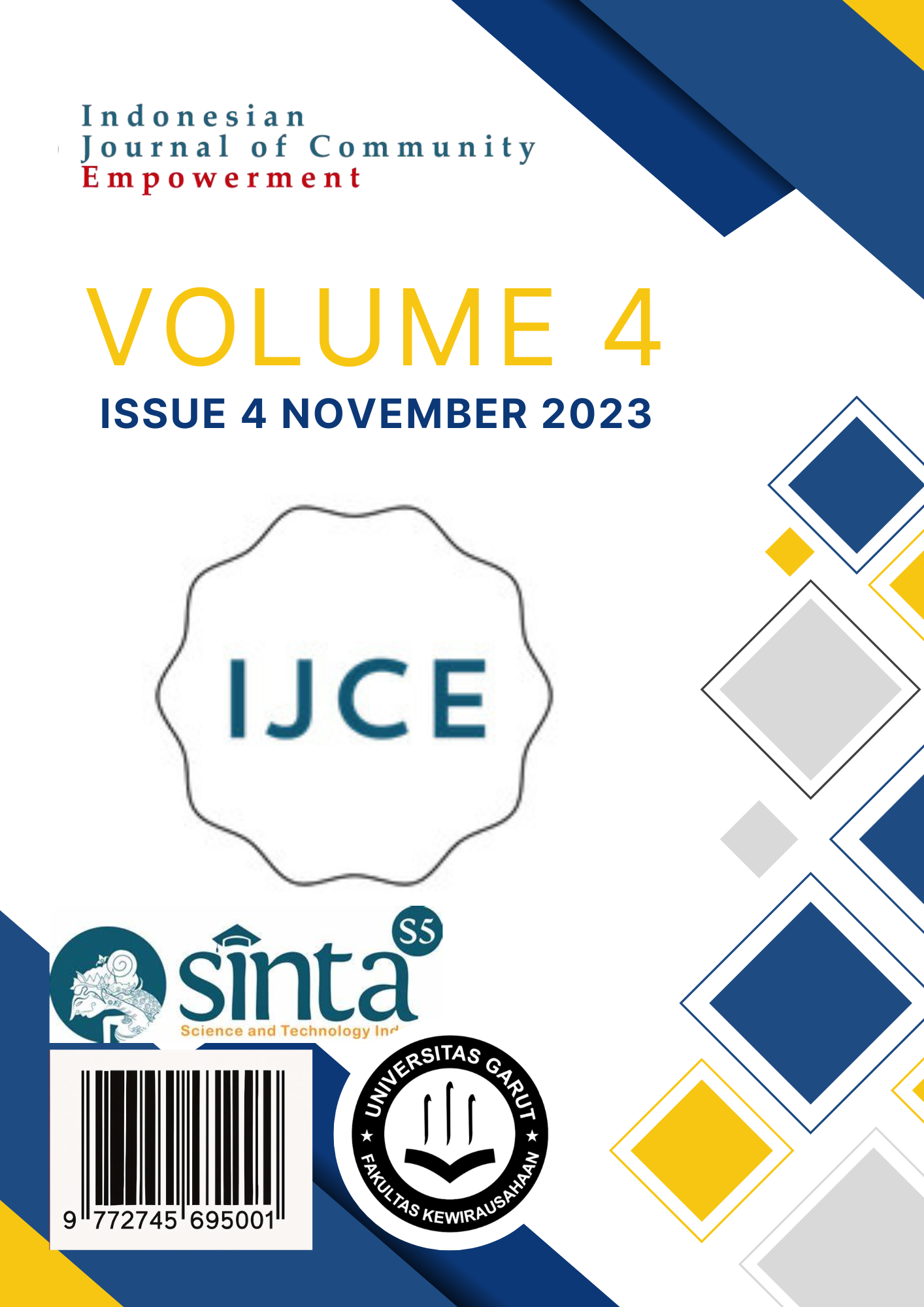Learning Evaluation for Elementary, Middle, and High School Levels
Abstract
At the elementary, secondary, and higher education levels, there are significant differences in the evaluation approaches required. In elementary schools, the evaluation approach typically focuses more on formative assessment to provide constructive feedback, thereby increasing student engagement and motivation to learn. This method is designed to provide educators with the skills and knowledge necessary to implement effective and relevant learning evaluations. This community service program significantly contributes to the understanding and practice of learning evaluation at the elementary, secondary, and higher education levels. With continued support in technology and innovative methods, it is hoped that the results will transform the culture of evaluation in schools and improve the overall quality of education. With increased evaluation knowledge and skills among educators, it is hoped that the overall quality of education will improve.
References
S. Soeprijanto, R. Prohantoro, R. A. Pratama, and D. A. Ariefin, “Needs Analysis for Developing Project-Based Learning Outcomes Assessment Models in Electricity Topic at the Center of Excellence Vocational High School,” J. Penelit. Pengemb. Pendidik. Fis., vol. 8, no. 2, pp. 325–334, 2022, doi: 10.21009/1.08214.
S. D. Sulistyaningrum, R. Dewanti, I. Iskandar, and ..., “… BERBICARA BAHASA INGGRIS TERINFUSI KETERAMPILAN BERPIKIR KRITIS BERBASIS MICROLEARNING KE DALAM VIRTUAL REALITY BAGI GURU SMP …,” Pros. Semin. …, 2023.
S. Ghufron, S. Hartatik, T. Saputri, S. Djazilan, P. Mariati, and M. Kurjum, “Online-Based Learning Management for Elementary School Teachers in the Midst of the Covid 19 Pandemic in Indonesia,” Pegegog, vol. 12, no. 4, 2022, doi: 10.47750/pegegog.12.04.14.
N. Ahyani, A. Zamhari, S. Susanti, and E. D. Chairunisa, “Jurnal sejarah dan pembelajaran sejarah,” vol. 6, 2020.
S. Samsudin, I. Setiawan, and D. R. A. S. Dwi, “The Playing-Based Learning Model to Improve Basic Volleyball Skills of Junior High School Students,” J. Cakrawala Pendidik., vol. 42, no. 1, pp. 232–240, 2023, doi: 10.21831/cp.v42i1.52231.
E. Purwati and Z. Arifin, “Evaluative Study of the Kurikulum Merdeka Learning System in Bandung Private Elementary Schools,” J. Curric. Dev., vol. 2, no. 2, pp. 167–182, 2023, doi: 10.17509/curricula.v2i2.58991.
H. Siswantari and A. Maretha, “Evaluation Instruments of Dance Learning Outcomes Based on Theory of Multiple Intelligences in Elementary School,” J. Teach. Learn. Elem. Educ., vol. 3, no. 2, p. 168, 2020, doi: 10.33578/jtlee.v3i2.7851.
N. A. C. Putry, D. K. Wardani, and D. P. Jati, “Pengaruh Efikasi Diri Terhadap Minat Berwirausaha Melalui Motivasi Sebagai Variabel Intervening,” J. Sos. Ekon. Dan Hum., vol. 6, no. 1, pp. 14–24, 2020, doi: 10.29303/jseh.v6i1.71.
S. Sumarno, G. Gimin, G. Haryana, and S. Saryono, “Desain Pendidikan Kewirausahaan Mahasiswa Berbasis Technopreneurship,” J. Ekon. Pendidik. Dan Kewirausahaan, vol. 6, no. 2, p. 171, 2018, doi: 10.26740/jepk.v6n2.p171-186.
H. Syahrudin, I. Ramadhan, N. M. Adlika, M. A. Hardiansyah, Y. O. Olendo, and F. Arifiyanti, “The Transition of Limited Face-to-Face Learning After Covid-19 Pandemic at Islamic Private Junior High Schools Pontianak,” J. Iqra, vol. 7, no. 2, pp. 168–182, 2022, doi: 10.25217/ji.v7i2.1802.
M. Giménez-Miralles, C. Gonzálvez, R. Sanmartín, M. Vicent, M. del P. A. Flores, and J. M. García-Fernández, “Classifying Students With School Refusal Behavior and Their Relationship to Learning Strategies,” Front. Educ., vol. 6, 2021, doi: 10.3389/feduc.2021.752199.
A. A. Owusu and C. Cobbold, “Factors That Influence Learning Strategy Use Among Senior High School Economics Students in Ghana: A Quantitative Approach,” Int. J. Learn. Teach. Educ. Res., vol. 19, no. 5, pp. 167–185, 2020, doi: 10.26803/ijlter.19.5.10.
B. Waqar, “Public Participation in School Management as a Catalytic Agent for the Enhancement of Education Quality,” Propel J. Acad. Res., vol. 1, no. 2, pp. 43–55, 2022, doi: 10.55464/pjar.v1i2.18.
G. Vettori, C. Vezzani, L. Bigozzi, and G. Pinto, “Assessing the Multidimensionality of Students’ Learning Orientations: The Use of LO-COMPASS for the Well-Being and Scholastic Success,” J. Educ. Cult. Psychol. Stud. (Ecps Journal), no. 22, 2020, doi: 10.7358/ecps-2020-022-vett.
M. Son and M. Ha, “Effects of Descriptive Peer Assessment on the Learning of Middle and High School Students in South Korea,” Sage Open, vol. 14, no. 2, 2024, doi: 10.1177/21582440241256538.
R. Gilbertson, E. E. Hessler, and D. J. Leff, “Active Learning and Community Engagement: Pedagogical Synergy Through The"Mobile Neuroscience Lab" Project,” June, vol. 20, no. 3, 2022, doi: 10.59390/vuna6753.
Q. Chen, O. Turel, and Y. Yuan, “Conflicting social influences regarding controversial information systems: the case of online dating,” Inf. Technol. People, 2023, doi: 10.1108/ITP-11-2020-0782.
A. Dahlena, S. Studies, and E. Program, “USE OF BASED LEARNING MEDIA MOTION GRAPHIC ANIMATION VIDEO TO ENHANCE SOCIAL STUDIES LEARNING,” pp. 197–208, 2022.
N. A. Hamdani, G. A. F. Maulani, S. Nugraha, T. M. S. Mubarok, and A. O. Herlianti, “Corporate culture and digital transformation strategy in universities in Indonesia,” Estud. Econ. Apl., vol. 39, no. 10, pp. 1–8, 2021, doi: 10.25115/eea.v39i10.5352.













